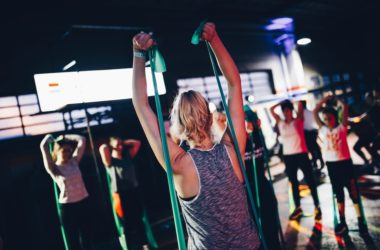Pilates is a fitness and wellness exercise that has been around for decades. The low-intensity exercise focuses on strengthening the core, improving flexibility, balance, and overall posture. Pilates has been found to have numerous benefits, from reducing stress levels to increasing muscle tone. In this article, we will explore how to incorporate Pilates into your daily routine, the essential equipment needed, and tips on staying committed to making it a long-term habit.
Determine Your Goals
Before you start any exercise program, it is essential to identify why you want to incorporate Pilates into your daily routine. Set specific, achievable goals, such as reducing back pain, improving posture or gaining more flexibility. Once you know your goals, make a plan to achieve them. Educate yourself on the movements that target your needs and the ones to avoid.
Find a Suitable Schedule
Assess your daily routine and find a suitable time to incorporate Pilates. If you have a busy schedule, consider waking up earlier, or squeeze in a session during your lunch break. Integrating Pilates into your existing workout schedule is also a great way to make it part of your routine. Experiment with different times of day and find what works best for you.
Choosing the Right Equipment
Pilates equipment ranges from mats, yoga blocks, resistance bands to Pilates machines. The type of equipment you need depends on your goals, budget, and experience. Mats and resistance bands are the most accessible and affordable equipment to start with. If you enjoy using machines, consider investing in a Reformer, Cadillac, or Pilates chair.
Starting Off Slow
If you are new to Pilates, it is essential to begin with simple movements. Pay attention to your form, as it is crucial in Pilates. Gradually increase the difficulty and intensity of the exercises as you progress. Start with a 15-20 minute routine and work your way up. Listen to your body and avoid pushing it beyond its limits to prevent injury.
Joining a Group Class
Many people find it helpful to join a Pilates class. Group classes provide a supportive environment, motivation, and an opportunity to learn new exercises. Find a class near you by searching online or asking friends for recommendations. Remember to consult with your doctor before starting any new exercise program, especially if you have pre-existing medical conditions.
Supplementing with Online Classes and Apps
If you cannot attend a physical class, consider supplementing with online Pilates classes and apps. There are many resources available, ranging from YouTube videos to paid apps. These options provide convenience and flexibility, allowing you to work out at your pace and schedule. However, ensure you have proper instruction and listen to your body to prevent injury.
Staying Committed
Making Pilates a long-term habit requires discipline and motivation. Set small, achievable milestones and celebrate each time you achieve them. Joining a supportive community, tracking your progress and varying your routine can also help you stay committed. Remember to stay consistent and not give up, even when progress seems slow.
Conclusion
Incorporating Pilates into your daily routine is an excellent way to improve your overall fitness and wellness. Plan your goals, find the right equipment, start small, and stay committed. Whether you attend group classes, use online resources or do it solo, Pilates can help you achieve a healthier, stronger, and more balanced body.





